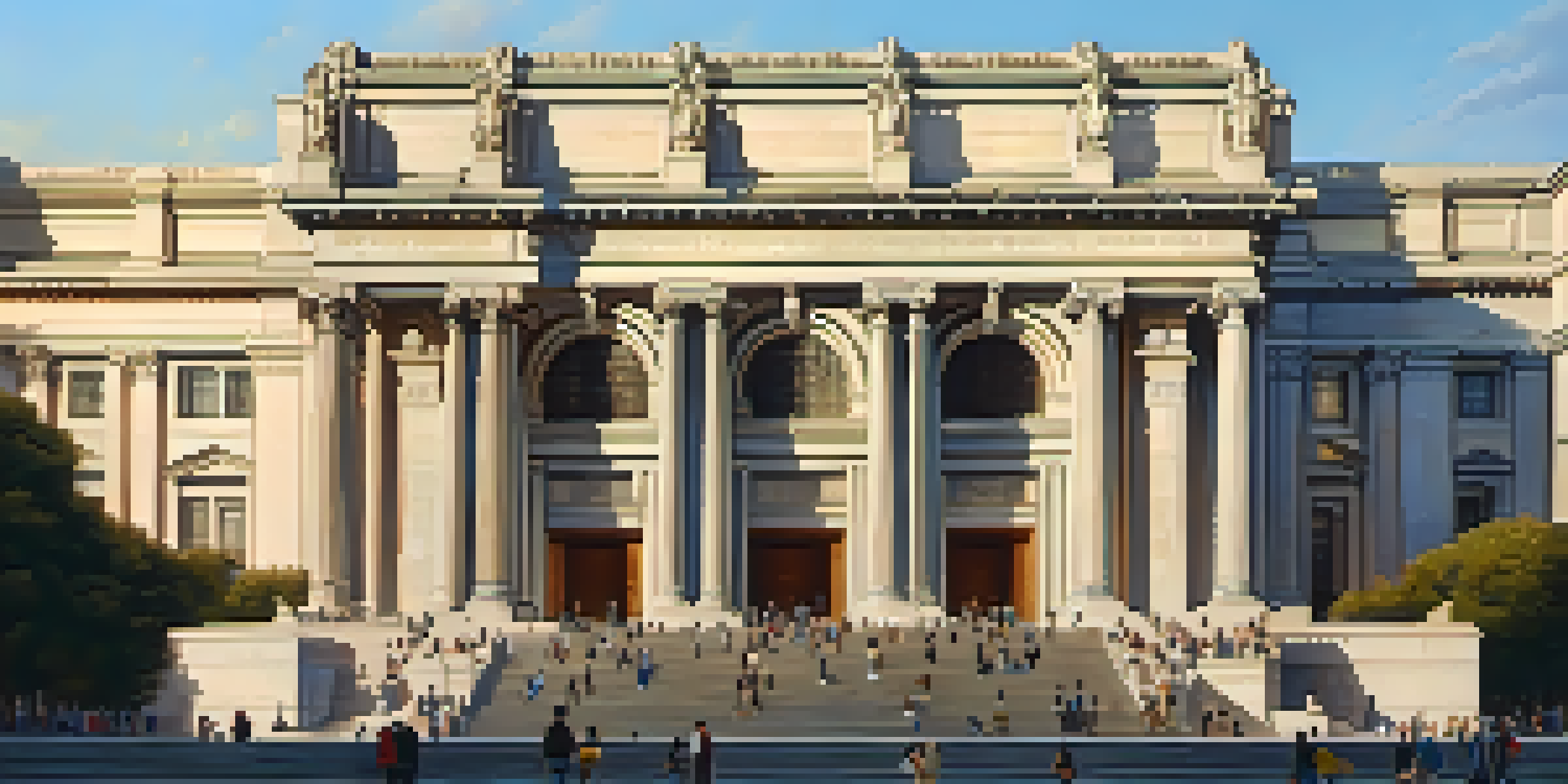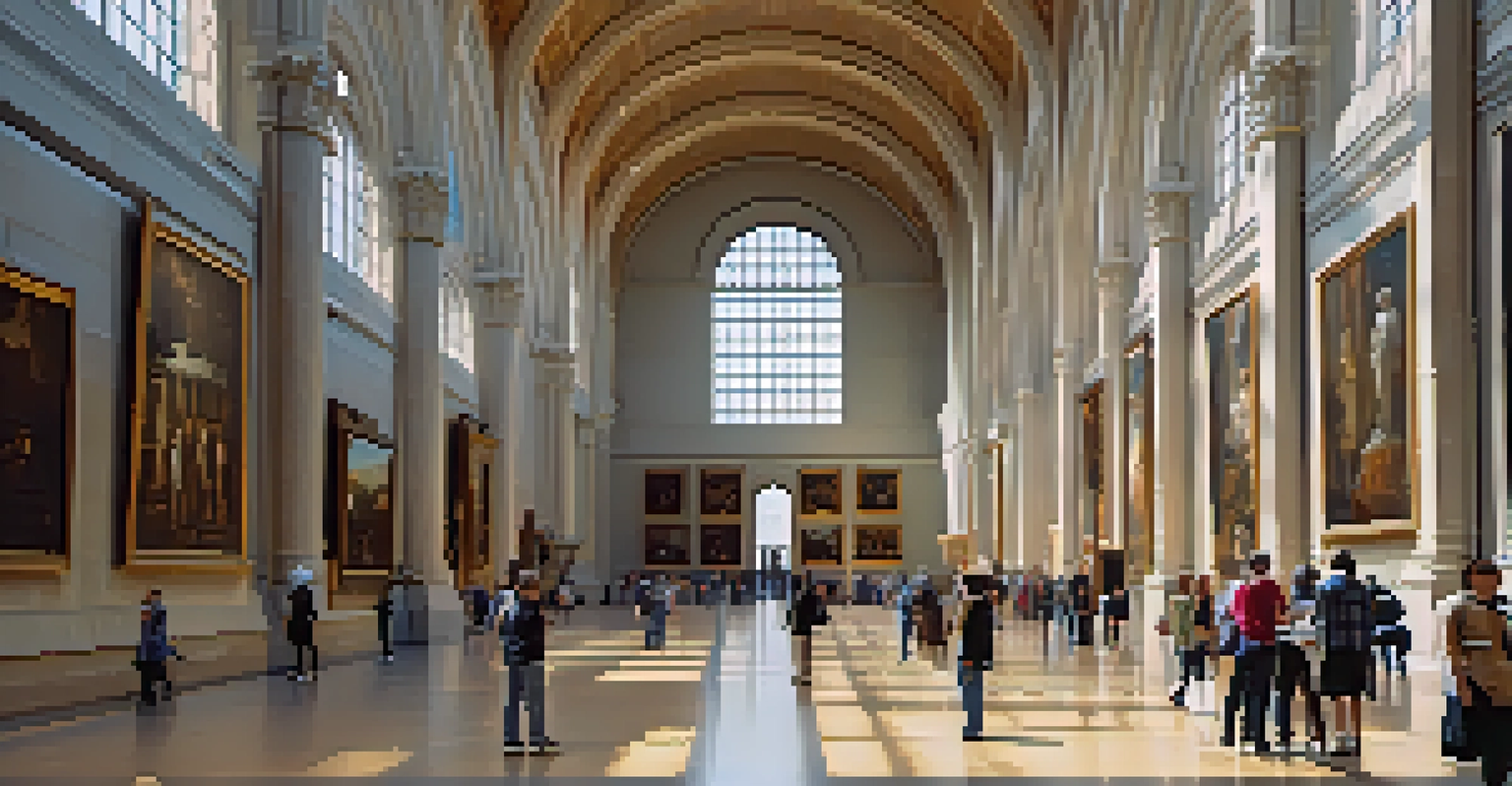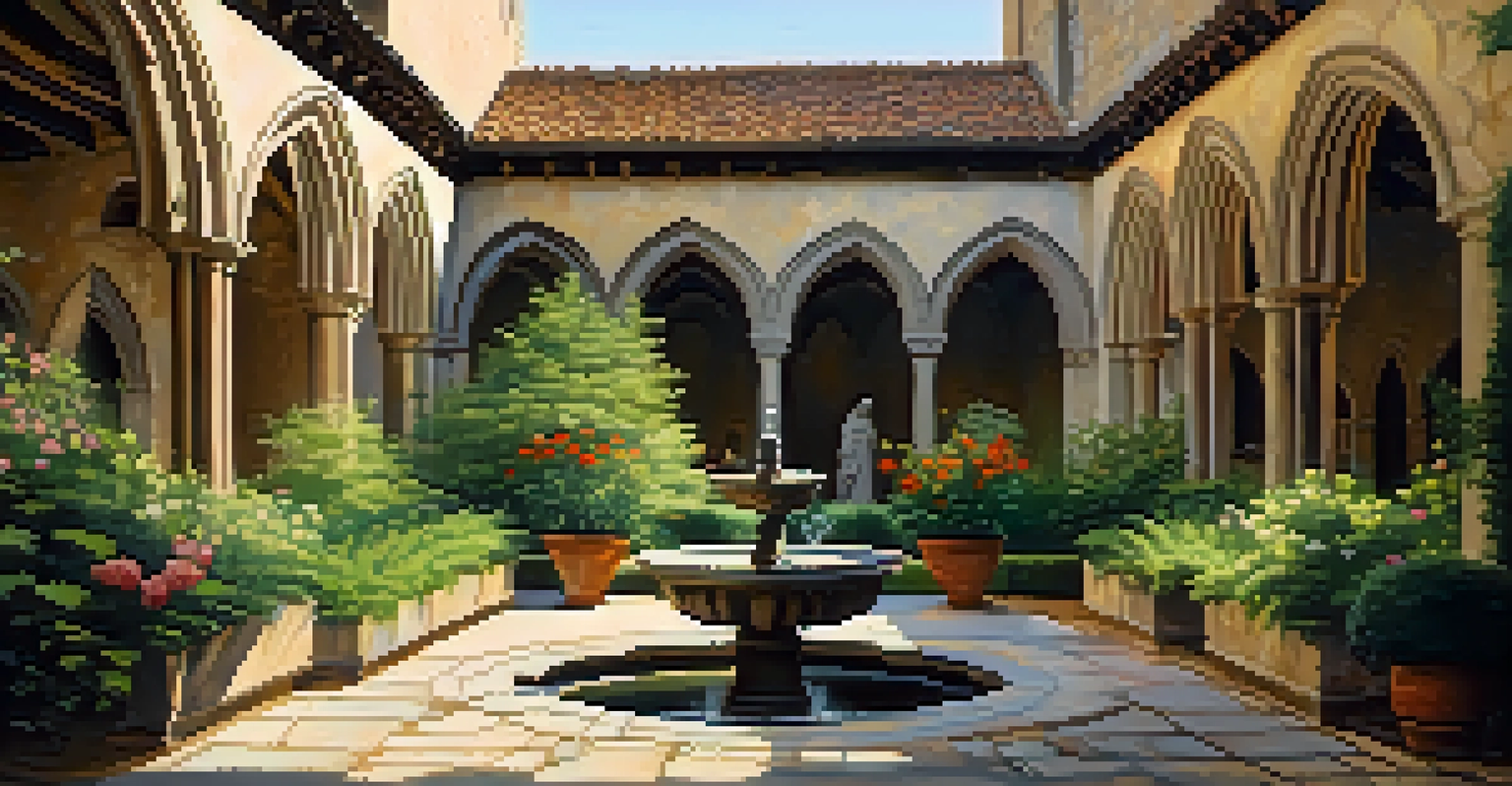Exploring the Metropolitan Museum of Art's Historic Roots

The Birth of an Icon: Founding the Metropolitan Museum
The Metropolitan Museum of Art, affectionately known as 'The Met,' was founded in 1870 by a group of American citizens, including artists and financiers. Their vision? To create a museum that would bring art and culture to the public, making it accessible to all. This dream was sparked by a desire to rival European museums, which were already dazzling visitors with their vast collections.
Art is not freedom from discipline, but disciplined freedom.
Initially housed in a modest building on Fifth Avenue, The Met opened its doors to the public in 1880. The founders aimed to showcase not just art but a narrative of human creativity that spanned centuries. This commitment to education and community engagement laid the groundwork for what would become one of the world's most visited museums.
As the museum grew, so did its collection, which now encompasses over two million works of art. The Met's foundations were built on the belief that art could enhance the lives of everyone, a principle that continues to guide its mission today.
The Architectural Evolution of The Met
From its humble beginnings, The Met has undergone significant architectural transformations, reflecting both its growth and the changing tastes of the times. The museum's original building, designed by Calvert Vaux and Jacob Wrey Mould, was a Gothic revival structure that has since been expanded numerous times. Each new addition has contributed to its unique character, blending various architectural styles.

The iconic Met Fifth Avenue, designed by Richard Morris Hunt, opened in 1902 and showcased a Beaux-Arts design that still captivates visitors today. This grand façade, with its majestic steps and columns, invites art lovers to explore the treasures within. The museum's architecture is not just about aesthetics; it's a physical representation of its rich history and evolving identity.
The Met's Rich Historical Legacy
Founded in 1870, The Met has grown from a modest building into a world-renowned museum, showcasing over two million works of art.
In addition to the main building, The Met has expanded to include The Met Cloisters, a branch dedicated to medieval art, and The Met Breuer, which focused on modern and contemporary works. These spaces allow the museum to broaden its narrative, making connections between different periods and styles, and showcasing the breadth of human creativity.
The Impact of World Events on The Met's Collection
Throughout its history, The Met's collection has been shaped by significant world events, including wars, economic shifts, and cultural movements. For example, during World War I, many European artists fled to America, enriching The Met's collection with their works and perspectives. This influx of talent helped diversify the museum’s offerings and introduced new artistic movements to a wider audience.
The greatest artist is the one who can take the most ordinary things and make them extraordinary.
The Great Depression also had a profound impact. While many institutions struggled, The Met adapted by launching educational programs and community outreach initiatives. This commitment to accessibility allowed the museum to connect with audiences during a time of hardship, reinforcing its role as a cultural hub.
Moreover, the rise of globalization in the late 20th century led to an increased focus on non-Western art. The Met responded by expanding its collection to include more works from Africa, Asia, and the Americas, providing a more comprehensive view of the world's artistic heritage and fostering a greater appreciation for diverse cultures.
The Role of Philanthropy in The Met's Growth
Philanthropy has played a crucial role in the growth and sustainability of The Met. Generous donations from individuals, corporations, and foundations have allowed the museum to acquire significant works of art and fund essential programs. Without the support of its patrons, many of the museum's most notable exhibitions and restoration projects would not have been possible.
Notable figures in American history, such as John D. Rockefeller Jr. and the Whitney family, have left a lasting impact through their contributions. Their legacies continue to inspire current and future generations to support the arts. This tradition of giving has been essential in ensuring that The Met remains a dynamic and vibrant institution.
Philanthropy Fuels The Met's Growth
Generous donations from patrons like John D. Rockefeller Jr. have been essential in acquiring significant art pieces and funding programs.
Today, The Met continues to engage with its community through fundraising initiatives and partnerships, demonstrating that the spirit of philanthropy is alive and well. These efforts not only enhance the museum's collection but also strengthen its commitment to accessibility and education for all.
The Met's Commitment to Education and Community
Education has always been at the heart of The Met's mission. From its earliest days, the museum has offered programs designed to engage visitors of all ages and backgrounds. Whether through guided tours, lectures, or hands-on workshops, The Met aims to foster a love of art and culture among its audience.
One of the most notable initiatives is The Met's school programs, which provide students with unique opportunities to explore art in a meaningful way. These programs not only enhance classroom learning but also inspire creativity and critical thinking skills. The museum's commitment to education ensures that art appreciation is accessible to everyone, regardless of their background.
Moreover, The Met has embraced technology, offering virtual tours and online resources that make its collection accessible to a global audience. This forward-thinking approach reflects the museum's dedication to inclusivity and its recognition of the evolving ways people engage with art.
Iconic Exhibitions that Shaped The Met's Legacy
Over the years, The Met has hosted numerous landmark exhibitions that have not only celebrated art but also sparked important conversations. One such exhibition was 'The Great American Thing' in 1939, which explored American art and culture during a time of national introspection. This exhibition set a precedent for the museum to showcase diverse narratives and perspectives.
In more recent years, exhibitions like 'Heavenly Bodies: Fashion and the Catholic Imagination' have drawn record-breaking crowds, blending the worlds of fashion and art in a way that resonates with contemporary audiences. These bold displays demonstrate The Met's ability to adapt and remain relevant in an ever-changing cultural landscape.
Commitment to Education and Access
The Met prioritizes educational programs and technological initiatives to ensure art appreciation is accessible to all, regardless of background.
Each exhibition is a testament to The Met's commitment to innovation and exploration, providing visitors with fresh insights into familiar works while introducing new artists and ideas. This dynamic approach ensures that The Met continues to inspire and educate, solidifying its place as a leader in the art world.
Looking Towards the Future: The Met's Vision
As The Met approaches its 150th anniversary, it looks to the future with a renewed sense of purpose. The museum is committed to expanding its reach and making art accessible to even more people through innovative programs and exhibits. By embracing a global perspective, The Met aims to reflect the diverse stories of humanity in its collections and programming.
Sustainability is also a key focus for The Met, with initiatives aimed at reducing environmental impact and promoting responsible practices. This commitment not only enhances the museum's operations but also serves as a model for other cultural institutions. The Met recognizes that its role extends beyond showcasing art; it has a responsibility to contribute positively to society.

In conclusion, The Met's historic roots provide a rich foundation for its future aspirations. By honoring its past while embracing innovation, The Met continues to thrive as a vital cultural institution that inspires and educates, ensuring that the love of art endures for generations to come.